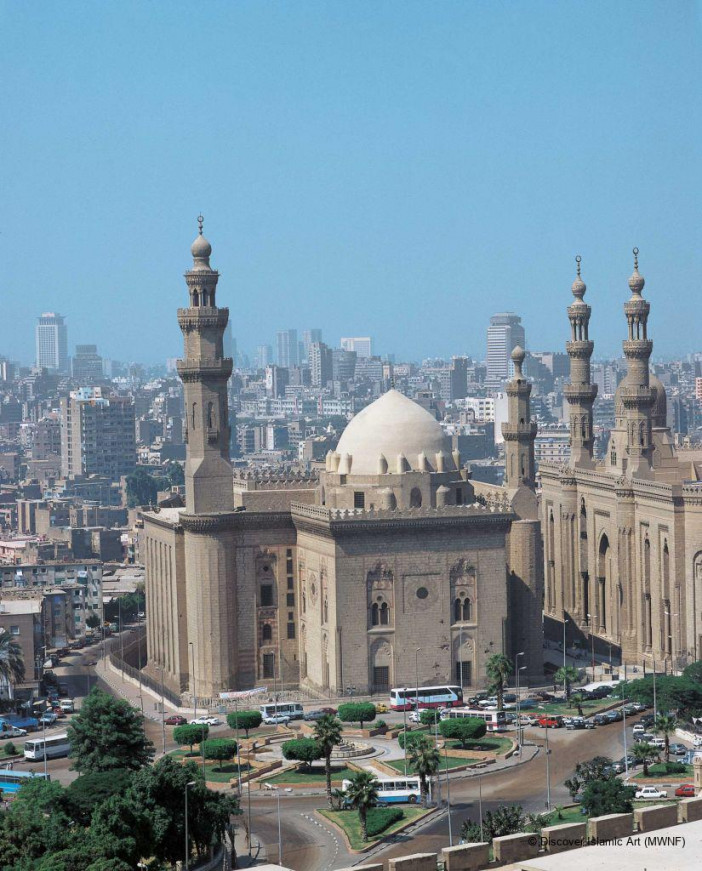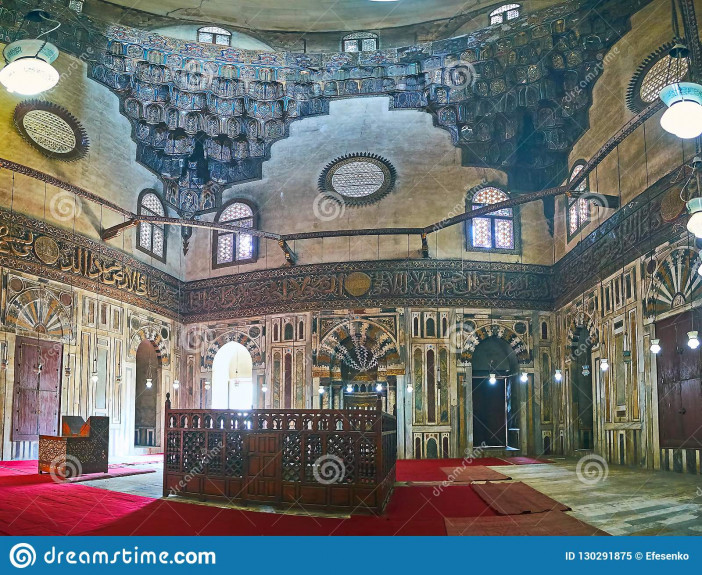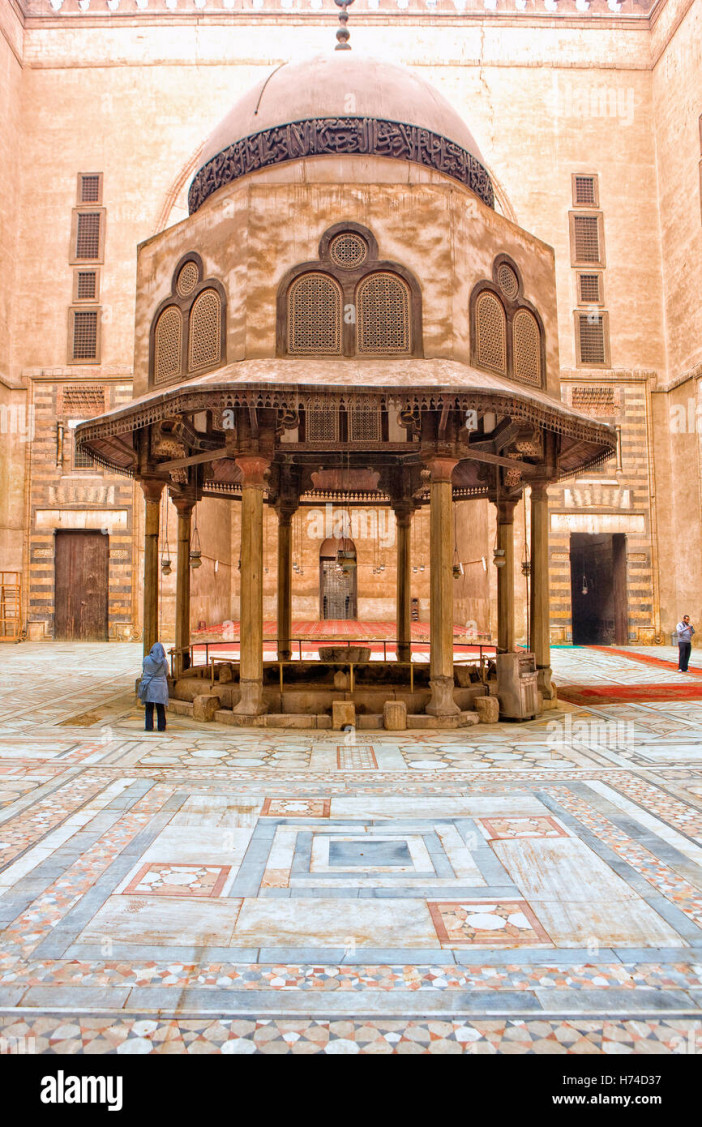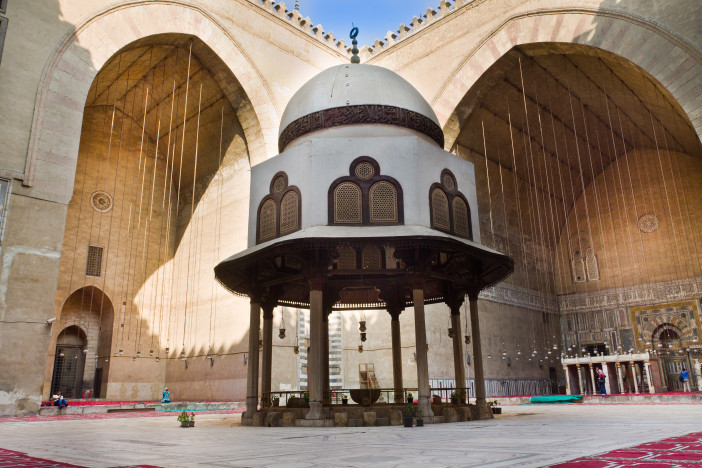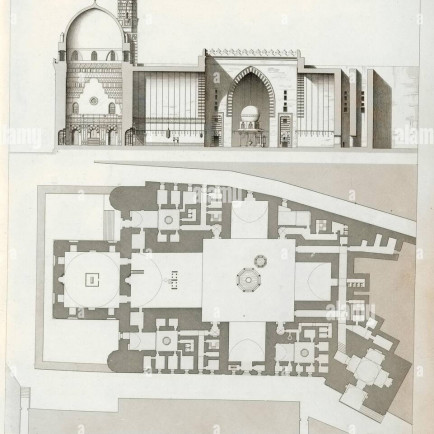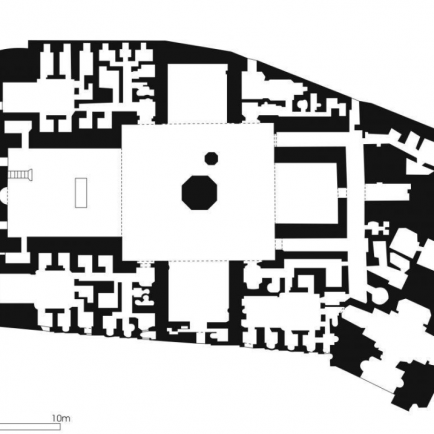Madrasa and Mosque of Sultan Hasan
History
the work on this imposing religious complex was initiated by Sultan An-Narsir al-Hasan, a controversial Mamluk ruler who ruled from 1347 to 1351 and from 1354 to 1361. Five years after the construction began, one of the two minarets collapsed on the crowd, resulting in the death of several hundred people. This catastrophe was soon followed by the murder of the sultan: his body was never found, although a mausoleum was provided to receive his remains. By 1363, the mosque and madrasa had been completed.
Urban and Architectural
The architecture of this iconic building in Cairo is typical of Mamluk times. Forming an extensive complex of 7900 m2, it consists of a mosque and a madrasa, all articulated around an inner courtyard or sahn. On either side of this central paved courtyard open four large deep arches or iwans. Accesses make it possible to reach the four madrasas that make up the complex as well as the cells of the students.
The dimensions of the complex make it one of the most important sanctuaries of the Egyptian capital: its length is thus nearly 155 m, while the tallest of its two minarets culminates at 81.6 m2.
Description
The decoration of the complex includes many inlays of white or polychrome marble, carved wood panels as well as stucco, and reveals Seljuq influences. Outside, the high walls are crowned by cornices from which drop mouqarnas, or stalactites.
Architect : Muhammad ibn Bailick al-Muhseini, the chief architectural designer of his day, supervised construction of the building. He placed his name after that of the sultan on the inscription band inside the Hanafi Madrasa
References
https://fr.wikipedia.org/wiki/Mosqu%C3%A9e_du_sultan_Hassan
https://www.egypte.fr/mosquee-sultan-hassan
Details
Location
El-Darb El-Ahmar, El Khalifa, Cairo Governorate, Égypte
Worshippers
2000
Owners
Sultan Hasan ibn al-Nasir Muhammad ibn Qalawun
Year of Build
1362
Area
7900
Drawings
Map
History
the work on this imposing religious complex was initiated by Sultan An-Narsir al-Hasan, a controversial Mamluk ruler who ruled from 1347 to 1351 and from 1354 to 1361. Five years after the construction began, one of the two minarets collapsed on the crowd, resulting in the death of several hundred people. This catastrophe was soon followed by the murder of the sultan: his body was never found, although a mausoleum was provided to receive his remains. By 1363, the mosque and madrasa had been completed.
Urban and Architectural
The architecture of this iconic building in Cairo is typical of Mamluk times. Forming an extensive complex of 7900 m2, it consists of a mosque and a madrasa, all articulated around an inner courtyard or sahn. On either side of this central paved courtyard open four large deep arches or iwans. Accesses make it possible to reach the four madrasas that make up the complex as well as the cells of the students.
The dimensions of the complex make it one of the most important sanctuaries of the Egyptian capital: its length is thus nearly 155 m, while the tallest of its two minarets culminates at 81.6 m2.
Description
The decoration of the complex includes many inlays of white or polychrome marble, carved wood panels as well as stucco, and reveals Seljuq influences. Outside, the high walls are crowned by cornices from which drop mouqarnas, or stalactites.
Architect : Muhammad ibn Bailick al-Muhseini, the chief architectural designer of his day, supervised construction of the building. He placed his name after that of the sultan on the inscription band inside the Hanafi Madrasa


